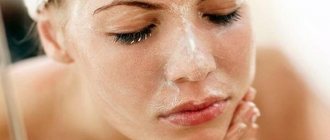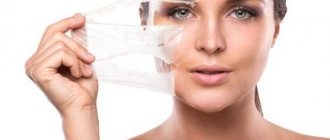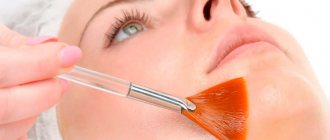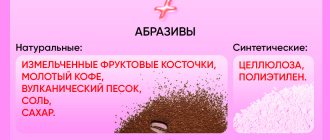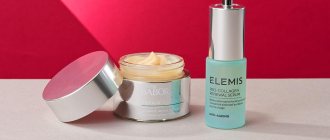You have chosen a gentle peeling
Or rather, a gentle peeling has been chosen for you if you are carrying out the procedure in a salon. Let us explain why this happens.
Aesthetic medicine, which tries to make a woman young and beautiful regardless of age, does not have standard solutions or universal recipes. The specialist (if he is a professional) will definitely take into account all the individual characteristics of the client.
The first visit to the salon for chemical facial cleansing always involves a gentle procedure. This is why there is no peeling after peeling.
The second position - products based on glycolic and fruit acids were used. Such procedures are classified as superficial; they do not affect the deep layers of the epidermis (and even more so do not affect the dermal tissues). The peeling of dead cells can be so slight that it is simply not visible to the naked eye.
The third position is a modern modified exfoliant. The products are designed in such a way that they do not have an aggressive effect on the skin, but remain no less effective. Therefore, there will be no peeling.
Possible consequences after a Jessner peel
An important feature of chemical peeling is not only the effect on all layers of the skin, but also the subsequent stimulation of the active process of cell restoration. Jessner peeling cares not only for the skin of the face, but also for the hands, décolleté, neck, and in some cases is used for the eyelids.
A wide choice of actions determines the presence of universal components in the peeling composition. It contains only 3 substances.
- Salicylic acid has a gentle effect on any kind of skin impurities, cleanses pores, dries them out, and helps to narrow them. Thanks to its anti-inflammatory and antiseptic effects, it soothes itching and provokes dead tissue to instantly shed.
- Lactic acid has a whitening and exfoliating effect. It promotes the production of collagen, a special protein that is responsible for the firmness and elasticity of the skin. Lactic acid, compared to other acids, has a softer and more gentle effect, therefore it has a beneficial effect on dry sensitive tissues. Its irreplaceable property remains the ability to retain and evenly redistribute moisture and concentrate it in all skin layers.
- Resorcinol helps to carry out the reaction of two acids: it enhances the whitening effect of lactic acid and the antibacterial process of salicylic acid, and has a cauterizing effect.
All components are used in 14% concentration. Sometimes the composition includes glycolic and citric acids, as well as isopropyl alcohol.
Depending on the dermatological problems present, the Jessner peel process may affect several layers of the skin:
- superficial procedure affects the outer stratum corneum, removing acne, improves complexion, gently exfoliating dead tissue;
- median peeling affects the basement membrane - the layer on which the epithelial layer is based, it can smooth out scars, reduce the depth of wrinkles, smooth them out;
- deep can replace a surgical facelift.
Another combined method of facial care is practiced during Jessner peeling - this is superficial-medium, when the cosmetologist alternates the depth of penetration.
Peeling has already passed
The absence of unpleasant dry flakes, which scare women the most, is possible not only when performing facial peeling with a gentle composition for the first time.
Women who regularly take care of their appearance and carry out cosmetic procedures in a salon or at home achieve amazing results. That is, the keratinized skin particles are so small, and the epidermis itself is pliable and susceptible to influence, that the upper dead layer is removed when the working composition is removed. Consequently, during the post-peeling period, skin peeling is not observed at all, or is very mild.
Indications and contraindications for salicylic peeling
Salicylic peeling can be performed on people over 20 years of age. It happens that according to indications and at the time of the skin condition during puberty, the procedure can be performed earlier than this age. Indications for chemical salicylic peeling include the following:
- Acne;
- Comedones: open and closed;
- Acne;
- Increased activity of the sebaceous glands;
- Post-acne and pigmentation;
- Earthy complexion;
- Loss of elasticity and expression lines;
- Enlarged pores;
- Dryness, tightness of the skin;
- Hyperkeratosis;
- Seborrheic dermatitis;
- Folliculitis.
The time for peeling has not yet come
The skin after peeling does not begin to peel off “this very second and now.” A certain amount of time must pass before this process begins. As a rule – 2-3 days.
At first, the face becomes a darker shade, then the upper ball begins to crack slightly and the keratinized particles begin to separate with varying degrees of intensity. This depends on several factors:
- depth of influence. Superficial peeling will not cause a particularly strong reaction and only slight peeling will be noticeable. The middle version of the impact involves the detachment of significant flaps of skin. The pieces look like dry, thin parchment. Under no circumstances should they be forcibly removed or scrubs used for these purposes. Deep peeling is a procedure performed only in a hospital setting and the rehabilitation period is characterized by very severe peeling, reminiscent of “molting”;
- exfoliant used. We have already mentioned this factor. The more aggressive the agent, the more pronounced the process will be;
- pronounced hyperkeratosis or the first procedure in many years. In this case, peeling will not happen, since your skin needs more extensive intervention to remove a sufficiently large number of dead scales that have accumulated over previous years or due to the individual characteristics of the epidermis.
Let us especially dwell on the fourth factor.
What to put on your face
During the first 6 days after the Jessner peel procedure, decorative cosmetics should be avoided.
Expert opinion
Elena Apostolyuk
Cosmetologist
It is necessary to prepare the skin in advance. Before the procedure, use creams and lotions with fruit acids. This will help soften and adapt the epidermis to subsequent chemical exposure.
Care after a Jessner peel will be painless if you first consult with your doctor about the use of various remedies that will promote rapid recovery. Be sure to include moisturizer, sunscreen, and herbal oils during the rehabilitation period.
Complex care includes formulations with hyaluronic and pyrrolidonecarboxylic acid. To restore the skin and maintain mineral balance, the presence of amino acids, sodium and calcium is necessary.
You have a special skin type
There is such a thing as “resistant epidermis”. People with this skin type are naturally resistant to damage. The face does not blush, and during the procedure of chemical cleansing and rejuvenation there are no uncomfortable sensations in the form of burning or tingling. These lucky ones are not prone to allergic manifestations.
In this case, it is very difficult to “exfoliate your face” with peeling. Unless it's deep. However, we cannot talk about the uselessness of cosmetic procedures. It’s just that the reaction to exposure by workers is somewhat different from the usual.
What types of salicylic peels are there?
There are two types of salicylic peeling for the face: superficial and medium. Superficial peeling is carried out with acid, concentration from 15 to 20%. It is usually performed on young skin prone to acne and comedones. Superficial salicylic peeling has a refreshing, cleansing and antiseptic effect, reduces oiliness and porosity of the skin, and reduces the number of acne. Medium facial peeling with salicylic acid is carried out on the basis of 25 or 30% acid. Deeper cleansing helps fight the signs of age, smoothes wrinkles and helps lighten pigmentation.
The process of cell exfoliation occurs in different ways. The thinner your skin, the faster the exfoliation will occur. The exfoliation process is also affected by the acid concentration - the higher it is, the faster the exfoliation will occur. There are cases when peeling of the skin does not occur at all - it depends on the skin and how it reacts to the composition.
If after the salicylic peeling procedure swelling, blisters, hyperemia, and soreness of the skin appear, consult a specialist. As a rule, this is how individual intolerance to the drug or allergy manifests itself.
What will cosmetologists say?
Experts say that those with oily skin types most often report a lack of peeling after chemical peeling. The reason is simple - the sebaceous secretion binds the keratinized particles and they either “fly off” during the removal of the composition, or a more thorough cleansing is required with a repeat procedure at least two weeks later.
After yellow peeling, there is no peeling in people with special skin types (we have already talked about them). Also, a similar reaction can be observed if the treatment is not retinoic (using retinoic acid), but retinol (using vitamin A and its natural derivatives). The second option is softer, more gentle, providing only a superficial effect on the epidermis. But it is less effective.
Salicylic peels may also not cause peeling in people with oily skin or low acid concentrations. Although this type of procedure is considered a very good preparation before more aggressive influences. Salicylic acid in the composition of the product very well loosens the upper stratum corneum. However, the manipulation needs to be done a week and a half before the “heavy artillery”.
Detachment of epithelial cells occurs imperceptibly when using the “correct” cosmetic products in the post-peeling period and following post-care rules.
Even if the skin does not peel off, cosmetologists advise:
- wash your face after chemical exfoliation with any composition the next morning. For these purposes, it is recommended to use cleansers with a neutral pH (not soap! – it dries). Thermal water or regular mineral water without gas will do;
- Do not use decorative cosmetics for 3-4 days. The effect of peeling will be more pronounced;
- during the entire rehabilitation period (the full recovery cycle ranges from 7 to 14 days) do not use scrubs, other peelings, alcohol-based tonics, cleansing wipes and similar products;
- also during this time do not visit places with high temperature and humidity - saunas, baths, swimming pools, beaches;
- do not sunbathe in the sun or go to the solarium for at least a month;
- even in winter, before going outside, apply a protective cream with a UV factor of at least 30 to your face;
- For the first three days, lubricate your face with panthenol-based creams at night. Next, regularly use moisturizers in the morning and nourishing products at night. Select caring cosmetics according to skin type and age.
Note. Cosmetologists recommend doing chemical peels during the season of least solar activity - from October to April. The sun can provoke the appearance of even greater pigmentation if you do not use sunscreen, or the protection index is insufficient.
Recommendations from experts
To help your skin recover faster, you need to follow these rules:
- Stop exercising. Sweat can irritate damaged skin. Mechanical damage that is possible during physical activity is also dangerous.
- Stop going to the pool or sauna.
- Avoid dishes that contain a lot of salt and hot spices. Also forget about alcohol during this time. These foods increase sweating.
- Nicotine is also harmful to injured skin.
- It is better to attend events after recovery - it is important to protect yourself from sources of bacteria.
- You need peace and no stress. An organism that is under stress performs regenerative functions worse.
Before peeling, you should consult with your specialist about what kind of care is suitable after the procedure. After all, the skin of different patients reacts differently. But there are universal recommendations. These include careful moisturizing, the use of sunscreens, and the use of products with vitamin B3.
But using oily cosmetic products and scrubs is not recommended. Also, do not peel off dead skin, touch your face, apply decorative cosmetics, or wash your face with tap water.
Peeling after a cosmetic procedure should not frighten the patient. It is important to follow the advice of a cosmetologist and be patient. If peeling does not go away for more than 2 weeks, it is important to contact your cosmetologist again.
How to prepare for salicylic peeling?
In order for the procedure to be as safe, productive and to produce the desired results, you need to properly prepare for it. Two weeks before the expected session, it is important to avoid visiting the sauna, steam bath, hammam, swimming pool, solarium and not sunbathing.
During basic skin care, it is recommended to use products that contain a small dose of salicylic acid to help the epidermis get used to this component or cosmetics designed to prepare the skin for peeling. During the preparatory period, you should not use gommages, scrubs and other peels, and actively protect your skin from the sun using products with a high SPF level.
